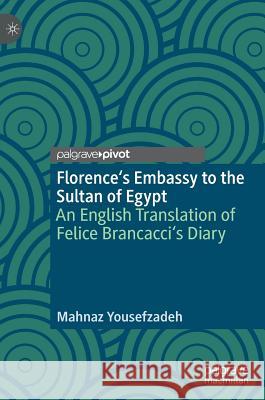Florence's Embassy to the Sultan of Egypt: An English Translation of Felice Brancacci's Diary » książka
topmenu
Florence's Embassy to the Sultan of Egypt: An English Translation of Felice Brancacci's Diary
ISBN-13: 9783030014636 / Angielski / Twarda / 2018 / 104 str.
Kategorie BISAC:
Wydawca:
Palgrave Pivot
Język:
Angielski
ISBN-13:
9783030014636
Rok wydania:
2018
Wydanie:
2018
Ilość stron:
104
Waga:
0.34 kg
Wymiary:
21.01 x 14.81 x 1.12
Oprawa:
Twarda
Wolumenów:
01
Dodatkowe informacje:
Wydanie ilustrowane











